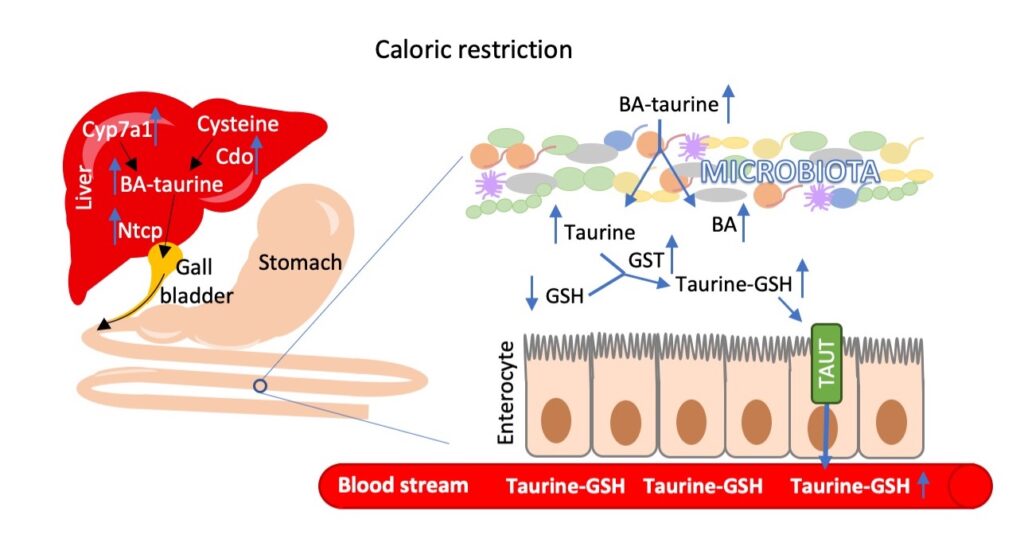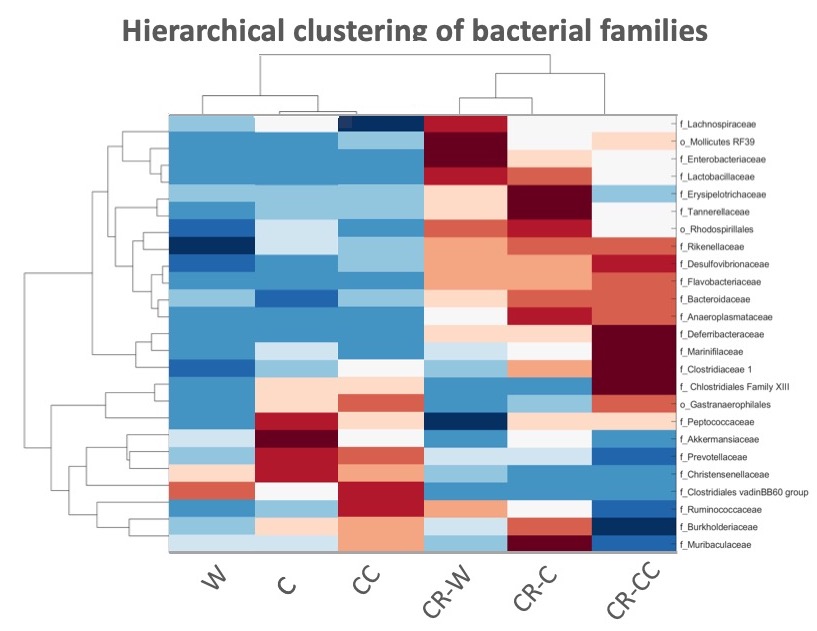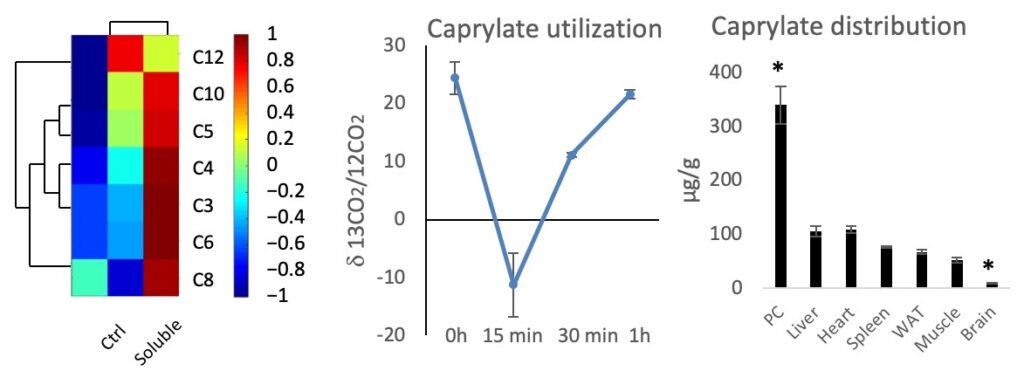on of GSH to taurine solution enhanced taurine uptake. Accordingly, the expression of taurine transporter (TauT) was increased in the ileum of CR animals and the levels of free and BA-conjugated taurine were lower in the feces of CR compared to ad libitum fed mice. Fittingly, BA- and GSH-conjugated taurine levels were increased in the plasma of CR mice, however, free taurine remained unaffected. We conclude that CR-triggered production and release of taurine-conjugated BA in the intestine results in increased levels of free taurine what stimulates GST to conjugate and enhance uptake of taurine from the intestine. Next, we investigate whether the microbiota is involved in the response to CR by modulating gut bacteria. The antibiotics treatment diminished CR-specific increase in the levels of free taurine and its conjugates as well as upregulated expression and activity of GSH transferases (GST) in the intestinal mucosa. Further, it diminished a CR-related increase in BAs levels in the liver, plasma, and intestinal mucosa. Transplant of microbiota from CR mice to ad libitum fed mice triggered CR-like changes in MGST1 expression, levels of taurine and taurine conjugates in the mucosa of the ileum. We show for the first time, that microbiota contributes to the intestinal response to CR-triggered changes in BA, taurine, and GST levels.

The odds of using animal models: cage bedding modifies metabolic and gut microbiota profiles in mouse studies applying dietary restriction
Experiments involving food restriction are common practice in metabolic research. Under fasted conditions, mice supplement their diet with cage bedding. We aimed at identifying metabolic and microbiota-related parameters affected by the bedding type. We exposed mice housed with wooden, cellulose, or corncob cage beddings to ad libitum feeding, caloric restriction (CR), or over-night (ON) fasting. Additionally, two subgroups of the ON fast group were kept without any bedding or on a metal grid preventing coprophagy. Mice under CR supplemented their diet substantially with bedding; however, the amount varied depending on the kind of bedding. Bedding-related changes in body weight loss, fat loss, cecum size, stomach weight, fecal output, blood ghrelin levels as well as a response to glucose oral tolerance test were recorded. As fiber is fermented by the gut bacteria, the type of bedding affects gut bacteria and fecal metabolites composition of CR mice. CR wood and cellulose groups showed distinct cecal metabolite and microbiome profiles when compared to the CR corncob group. While all ad libitum fed animal groups share similar profiles. We show that restriction-related additional intake of bedding-derived fiber modulates multiple physiological parameters. Therefore, the previous rodent studies on CR, report the combined effect of CR and increased fiber consumption.

A diet high in soluble fibre boosts the production of short-chain fatty acids (SCFA) and caproate whereas a high-cellulose diet does not have an effect or decreases the levels of some of the FAs. Colonic MCFAs can be rapidly utilized as a source of energy or stored as a lipid supply. Locally produced caprylate may impact metabolism and inflammatory parameters in the colon.

Food cues affect hunger and nutritional choices. Observation of food pictures influences the concentration of several appetite-related hormones (ghrelin, gastric inhibitory peptide (GIP), and glucagon-like peptide-1 (GLP-1)). Additionally, the protein content of displayed foods and green colour intensity in pictures may serve as a predictor of the subjective attractiveness of the presented meal.
